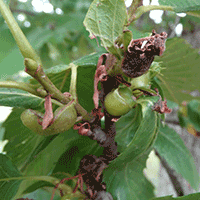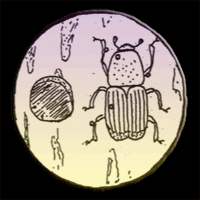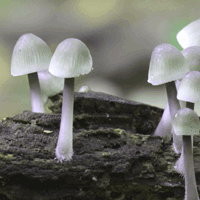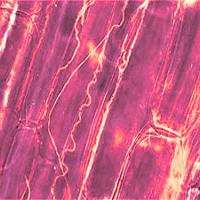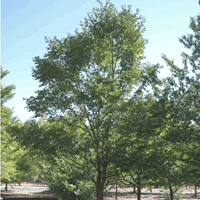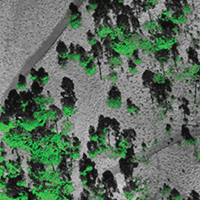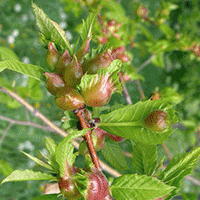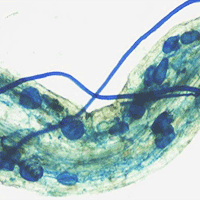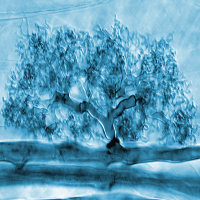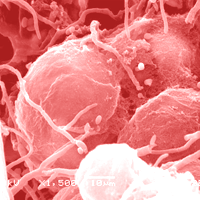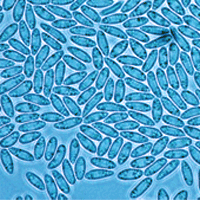
Brown rot on nuts of Castanea sativa Mill: an emerging disease and its causal agent
G Maresi (1) , CM Oliveira Longa (2), T Turchetti (3)
iForest - Biogeosciences and Forestry, Volume 6, Issue 5, Pages 294-301 (2013)
doi: https://doi.org/10.3832/ifor0952-006
Published: Jul 16, 2013 - Copyright © 2013 SISEF
Research Articles
Abstract
The quality and quantity of nut production are fundamental to the economic viability of chestnut cultivation, yet recent reports indicate that severe damage due to moulds represents a significant problem for growers. We carried out an investigation of the agents of chestnut rot and internal fruit damage in three orchards in Italy. Black and brown rot, as well as insect damage, were found in all the areas examined. Brown rot appeared to be the main cause of damage, affecting 8% to 49% and 2% to 24% of nuts collected from the ground and from burrs, respectively. With respect to morphology and DNA sequencing analyses, fungal isolates obtained from brown rot were homologous with Gnomoniopsis sp. obtained from Dryocosmus kuriphilus (Yasumatsu) galls and with Gnomoniopsis castanea and Gnomoniopsis smithogilvyi described on chestnut in Italy and Australia, respectively. The same fungus was also isolated from the bark of one- and two-years-old healthy shoots at each site, supporting the endophytic behaviour of this rot agent. Brown rot symptoms on nuts associated with Gnomoniopsis sp. corresponded with those previously described by several authors and referred to as Phoma or Phomopsis endogena, suggesting a relationship between these fungi and Gnomoniopsis sp. It is to notice that the escalation of brown rot damage in Italy followed several periods of drought and probably the recent invasion of D. kuriphilus, both stress factors for chestnut trees.
Keywords
Authors’ Info
Authors’ address
FEM-IASMA - Centre for Technology Transfer, v. E. Mach 1, I-38010 San Michele all’Adige (TN - Italy)
FEM-IASMA - Research and Innovation Centre, Sustainable Agro-Ecosystems and Bioresources Department, v. E. Mach 1, I-38010 San Michele all’Adige (TN - Italy)
Institute of Plant Protection (IPP-CNR), v. Madonna del Piano 10, I-50019 Sesto Fiorentino (FI - Italy)
Corresponding author
Paper Info
Citation
Maresi G, Oliveira Longa CM, Turchetti T (2013). Brown rot on nuts of Castanea sativa Mill: an emerging disease and its causal agent. iForest 6: 294-301. - doi: 10.3832/ifor0952-006
Academic Editor
Alberto Santini
Paper history
Received: Jan 21, 2013
Accepted: Apr 19, 2013
First online: Jul 16, 2013
Publication Date: Oct 01, 2013
Publication Time: 2.93 months
Copyright Information
© SISEF - The Italian Society of Silviculture and Forest Ecology 2013
Open Access
This article is distributed under the terms of the Creative Commons Attribution-Non Commercial 4.0 International (https://creativecommons.org/licenses/by-nc/4.0/), which permits unrestricted use, distribution, and reproduction in any medium, provided you give appropriate credit to the original author(s) and the source, provide a link to the Creative Commons license, and indicate if changes were made.
Web Metrics
Breakdown by View Type
Article Usage
Total Article Views: 64254
(from publication date up to now)
Breakdown by View Type
HTML Page Views: 51501
Abstract Page Views: 4246
PDF Downloads: 6594
Citation/Reference Downloads: 70
XML Downloads: 1843
Web Metrics
Days since publication: 4534
Overall contacts: 64254
Avg. contacts per week: 99.20
Citation Metrics
Article Citations
Article citations are based on data periodically collected from the Clarivate Web of Science web site
(last update: Mar 2025)
Total number of cites (since 2013): 80
Average cites per year: 6.15
Publication Metrics
by Dimensions ©
Articles citing this article
List of the papers citing this article based on CrossRef Cited-by.
References
and pv. syringae associated with seedling and stem cankers. In: “Proceedings of international congress on chestnut”. Spoleto (Italy) 20-23 Oct 1993. E. Antognozzi ed., Spoleto, Italy, pp. 541-544.
Gscholar
Dryocosmus kuriphilus Yasumatsu: an outline seven years after the first report in Piedmont (Italy). Acta Horticolture 866: 341-348.
Gscholar
Preliminary studies on endophytic fungal communities of Musa acuminata species complex in Hong Kong and Australia. Fungal Diversity 1: 27-51.
Gscholar
La “mummificazione delle castagne” da Phomopsis viterbensis sp. Annali della Sperimentazione Agraria 2: 557-566. [in Italian]
Gscholar
La “mummificazione” delle castagne da Phomopsis endogena (Spe.) nobis, n. comb. Notiziario delle Malattie delle piante 8: 36-37. [in Italian]
Gscholar
Raccolta, trattamento e conservazione delle castagne. Caratteristiche del frutto e principali agenti infestanti. Prima parte. Sherwood 11(107): 5-12. [in Italian]
Gscholar
Microfungi on land plants. An identification handbook. The Richmond Publishing, New York, USA, pp. 868.
Gscholar
Características comerciais e composição química básica das castanhas provenientes de clones híbridos da selecção do CENASEF. In: “Castanheiros híbridos - Estudos de resistência à doença da tinta” (Gomes-Laranjo J, Peixoto F, Ferreira-Cardoso J eds). Projecto Castaña/SP1.E9/ 02, Programa INTERREG III A Cooperação Transfronteiriça UTAD, Vila Real, Galicia-Norte, Portugal, pp. 8-17. [in Portuguese]
Gscholar
An epidemic of Gnomonia pascoe on nuts of Castanea sativa in the Cuneo area. Acta Horticolture 866: 363-368.
Gscholar
Chemical composition and health aspects of Chestnut (Castanea spp.). In: “Tree nuts: composition, phytochemicals, and health effects” (Alasalvar C, Shahidi F eds). CRC Press, Taylor & Francis, Boca Raton, FL, USA, pp 171-184.
Gscholar
Gnomoniopsis associated with necrosis of leaves and chestnut galls induced by Dryocosmus kuriphilus. New Disease Reports 21: 15.
Gscholar
Hongos causantes de pudricones en frutos de Castanea sativa Mill. Simiente 56: 166-169. [in Spanish]
Gscholar
Nuovi reperti fitopatologici. Annali Accademia Italiana Scienze Forestali 12: 313-345. [in Italian]
Gscholar
A new strategy of environmentally safe control of chestnut tortricid moths. IOBC/WPRS Bulletin 74: 117-123.
Gscholar
Note di bio-patologia e tecnica della conservazione e trasporto: marroni e castagne. Rivista di Frutticoltura 56 (4): 75-77. [in Italian]
Gscholar
Sur la biologie de quelques champignons parasites de la ch’taigne et plus particulerement de Phoma endogena (Speg.). Comptes-rendus des Seances de l’Academie d’Agriculture de France 46: 536-543. [in French]
Gscholar
Fungi Gallici lecti a cl. viris P. Brunaud, C.C. Gillet et Abb. Letendre. Michelia 1: 500-538.
Gscholar
Il cinipide galligeno del castagno. Terra trentina 53 (9): 24-29. [in Italian]
Gscholar
Appunti di fitopatologia: VII intorno alle muffe delle castagne. Bollettino Laboratorio. Sperimentale Regio Osservatorio Fitopatologico 17: 39-44. [in Italian]
Gscholar
Shuttleworth LA, Liew ECY, Guest DI (2012) Gnomoniopsis smithogilvyi Fungal Planet 108. In: “Fungal Planet Description Sheets: 107-127” (Crous PW, Summerell BA, Shivas RG, Burgess TI, Decock CA, Dreyer LL, Granke LL, Guest DI, Hardy GEStJ, Hausbeck MK, Hüberli D, Jung T, Koukol O, Lennox CL, Liew ECY, Lombard L, McTaggart AR, Pryke JS, Roets F, Saude C, Shuttleworth LA, Stukely MJC, Vánky K, Webster BJ, Windstam ST, Groenewald JZ eds). Persoonia 28: 107-127.
CrossRef | Gscholar
A new species of Phomopsis on Castanea mollissima. Mycosystema 29(4): 467-471.
Gscholar
The life cycle, pathology and taxonomy of two different nut rot fungi in chestnut. Australian Nutgrower 22 (2): 11-15.
Gscholar
Biological control of chestnut gall wasp by endophitic fungus Gnomoniopsius sp. In: Proceedings of the “Fifth International Chestnut Symposium”. Shepherdstown (WV - USA) 4-8 Sept 2012. ISHS Press, Leuven, Belgium (in press).
Gscholar
Gnomoniopsis castanea sp. nov (Gnomoniaceae, Diaporthales) as a causal agent of nut rot in sweet chestnut. Journal of Plant Pathology 94: 411-419.
Gscholar
Phoma endogena, parassita delle castagne. Annali Regia Accademia Agricoltura 60: 3-12. [in Italian]
Gscholar
Amplification and direct sequencing of fungal ribosomal DNA for phylogenetics. In: “PCR Protocols: a guide to methods and applications” (Innis MA, Gelfand DH, Sninsky JJ, White TJ eds). Academic Press, San Diego, CA, USA, pp. 315-322.
Gscholar

